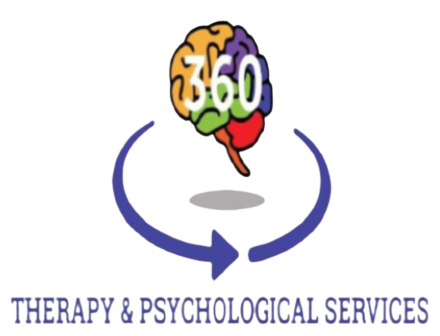Choosing the Right Approach: Cognitive vs Behavioral Therapy

When it comes to addressing mental health concerns, choosing the right therapeutic approach is crucial. Cognitive therapy and behavioral therapy are two widely recognized and effective methods, each with its unique focus and techniques. In this guide, we’ll explore the differences between cognitive therapy and behavioral therapy, helping you understand their distinct features, benefits, and considerations.
If you’re searching for cognitive behavior therapy near me, understanding these distinctions can help you identify the most suitable therapeutic option for your needs.
Understanding Cognitive vs Behavioral Therapy
Cognitive-behavioral therapy (CBT) is a popular and evidence-based approach that combines cognitive and behavioral techniques to help individuals modify negative thought patterns and behaviors. The focus is on identifying and challenging irrational beliefs, changing cognitive distortions, and developing healthier coping strategies.
On the other hand, behavioral therapy emphasizes modifying behavior directly, without necessarily delving deeply into underlying thoughts or beliefs. This approach focuses on identifying problematic behaviors, understanding their triggers, and implementing behavior change strategies. Let’s dive deeper into both.
Cognitive Therapy: Challenging Thoughts and Beliefs
Cognitive therapy, also known as cognitive restructuring or cognitive-behavioral therapy (CBT), targets cognitive distortions and negative thought patterns that contribute to emotional distress or maladaptive behaviors. By using various techniques, cognitive therapy aims to help individuals gain insight into their thought processes, develop self-awareness, and learn strategies for managing emotions and behaviors effectively.
Techniques in Cognitive Therapy
- Cognitive Restructuring: This technique involves identifying and challenging negative automatic thoughts, cognitive distortions (such as black-and-white thinking or catastrophizing), and irrational beliefs. By examining the evidence for and against these thoughts, individuals can develop more balanced and realistic thinking patterns.
- Thought Records: Keeping track of thoughts, emotions, and behaviors through thought records helps individuals identify patterns and triggers that contribute to their distress. This process fosters self-awareness and provides a basis for challenging and reframing unhelpful thoughts.
- Cognitive Reframing: Encouraging more adaptive and realistic thinking patterns involves shifting perspective and finding alternative interpretations of situations. This technique promotes cognitive flexibility and resilience in dealing with life’s challenges.
- Homework Assignments: Practicing new coping skills and challenging beliefs outside of therapy sessions through homework assignments reinforces learning and application of therapeutic strategies in real-life situations.
Effectiveness of Cognitive Therapy
Cognitive therapy has been found to be highly effective for treating a range of mental health conditions, including anxiety disorders, depression, post-traumatic stress disorder (PTSD), and obsessive-compulsive disorder (OCD). By addressing underlying cognitive processes and beliefs, individuals can experience significant improvements in mood, functioning, and overall well-being.
Behavioral Therapy: Modifying Behavior Patterns
Behavioral therapy focuses on modifying specific behaviors by understanding the environmental triggers and reinforcements that maintain those behaviors. This approach emphasizes the importance of observable and measurable changes in behavior, leading to improvements in functioning and well-being.
Techniques in Behavioral Therapy:
- Behavior Analysis: Identifying antecedents (triggers), behaviors, and consequences helps therapists and individuals understand the factors that influence behavior patterns. This analysis forms the basis for developing targeted interventions.
- Behavior Modification: Using techniques such as positive reinforcement (rewarding desired behaviors), shaping (gradually shaping behaviors towards a target behavior), and extinction (removing reinforcement for undesirable behaviors) encourages the development of adaptive behaviors and the reduction of maladaptive ones.
- Exposure Therapy: This technique involves gradual exposure to feared or avoided situations, allowing individuals to confront and overcome their fears or anxieties. Exposure therapy is particularly effective for treating phobias, PTSD, and anxiety disorders.
- Skills Training: Teaching practical skills, such as relaxation techniques, social skills, or problem-solving skills, helps individuals improve their coping abilities and enhance their overall functioning.
Effectiveness of Behavioral Therapy:
Behavioral therapy has been shown to be effective for treating a variety of conditions, including phobias, addiction, eating disorders, impulse control disorders, and behavior problems in children and adolescents. By focusing on behavior change strategies and environmental factors, individuals can experience tangible improvements in their behaviors and functioning.
Choosing the Right Approach: Key Considerations
When deciding between cognitive therapy and behavioral therapy, several factors should be considered:
- Nature of the Issue: Cognitive therapy may be more suitable for addressing cognitive distortions, negative thinking patterns, and emotional regulation. Behavioral therapy is effective for changing specific behaviors, habits, and reactions.
- Client Preferences: Some individuals may prefer a cognitive approach that emphasizes introspection and cognitive restructuring. Others may prefer a behavioral approach that focuses on concrete actions and behavior change strategies.
- Comorbidity: For clients with complex mental health issues or comorbid conditions, a combination of cognitive and behavioral techniques (CBT) may be most beneficial.
- Therapist Expertise: It’s essential to consider the therapist’s training, experience, and expertise in cognitive and behavioral techniques when choosing the right approach.
- Treatment Goals: Clarifying treatment goals and desired outcomes can guide the selection of the most appropriate therapeutic approach.
FAQs
What is the main difference between cognitive therapy and behavioral therapy?
The main difference between cognitive therapy and behavioral therapy lies in their focus and techniques. Cognitive therapy targets irrational beliefs and negative thought patterns, while behavioral therapy focuses on modifying specific behaviors directly.
Is one therapy better than the other for treating depression?
Both cognitive therapy and behavioral therapy have been shown to be effective for treating depression. The choice between the two depends on individual factors, treatment goals, and client preferences.
How long does it typically take to see results from cognitive therapy or behavioral therapy?
The timeframe for seeing results from cognitive therapy or behavioral therapy varies depending on the individual, the nature of the issues being addressed, and the consistency of therapy sessions. Some individuals may experience noticeable improvements within a few weeks, while others may require longer-term therapy for sustained benefits.
Takeaway
In conclusion, both cognitive therapy and behavioral therapy offer valuable tools and techniques for addressing mental health challenges and promoting positive change. The choice between these approaches depends on individual factors, treatment goals, and client preferences. Whether focusing on challenging negative thought patterns in cognitive therapy or modifying behavior directly in behavioral therapy, the goal remains the same: to improve mental well-being and enhance overall quality of life. Ultimately, the effectiveness of therapy lies in the therapeutic relationship, the client’s commitment to the process, and the collaborative effort between therapist and client in achieving meaningful and sustainable outcomes.
recent post

Best Tips for Choosing the Right Family Doctor for Your Health Care

What to Expect from Psychodiagnostics Assessment – A Complete Guide


How to Find the Right Therapist for Your Mental Health Matters


